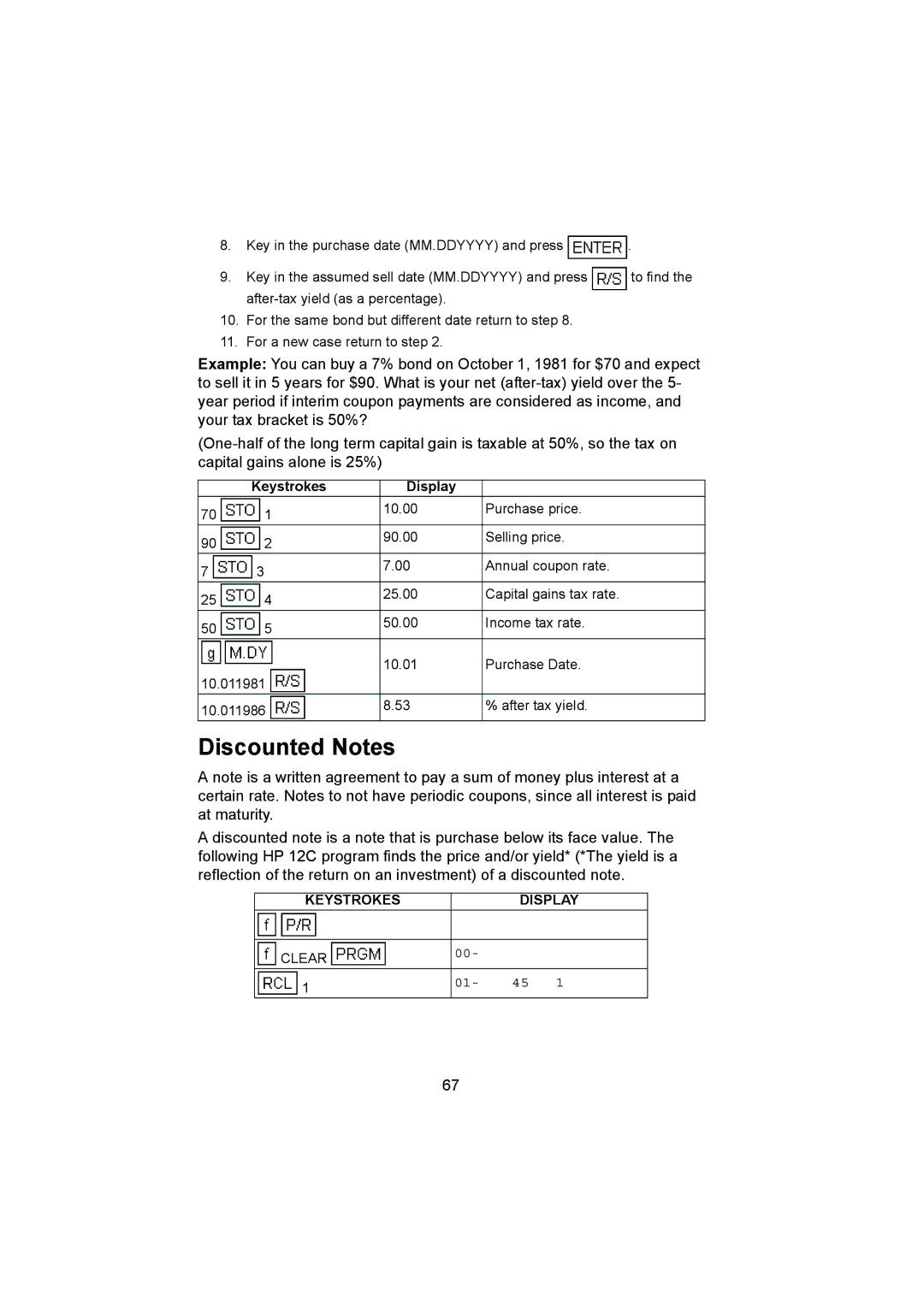
8.Key in the purchase date (MM.DDYYYY) and press ![]() .
.
9.Key in the assumed sell date (MM.DDYYYY) and press ![]() to find the
to find the
10.For the same bond but different date return to step 8.
11.For a new case return to step 2.
Example: You can buy a 7% bond on October 1, 1981 for $70 and expect to sell it in 5 years for $90. What is your net
| Keystrokes | Display |
|
70 | 1 | 10.00 | Purchase price. |
|
| ||
90 | 2 | 90.00 | Selling price. |
|
| ||
7 | 3 | 7.00 | Annual coupon rate. |
|
| ||
25 | 4 | 25.00 | Capital gains tax rate. |
|
| ||
50 | 5 | 50.00 | Income tax rate. |
|
| ||
|
| 10.01 | Purchase Date. |
10.011981 |
|
| |
10.011986 | 8.53 | % after tax yield. | |
|
| ||
Discounted Notes
A note is a written agreement to pay a sum of money plus interest at a certain rate. Notes to not have periodic coupons, since all interest is paid at maturity.
A discounted note is a note that is purchase below its face value. The following HP 12C program finds the price and/or yield* (*The yield is a reflection of the return on an investment) of a discounted note.
KEYSTROKES |
| DISPLAY |
|
|
|
CLEAR | 00- |
|
1 | 01- | 45 1 |
67
